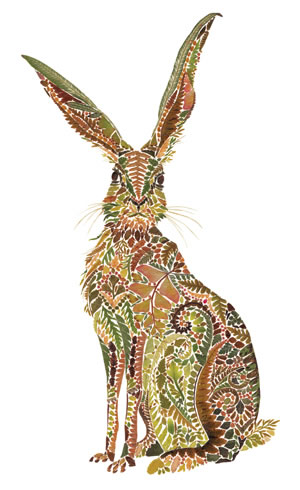What’s the single most important aspect of the natural world in Britain? The inspiring beauty it offers us? The way it can prompt creativity? The fact that it is often a haven of peace in an increasingly fractious world? Nope. None of those. The key thing is, we’ve destroyed more than half of it in the last 50 years.
The second most important thing to get your head around, when considering Nature in our country, is the weird and startling fact that although the mass wildlife destruction of recent decades has left much of the land sterile and lifeless, this is neither perceived nor comprehended by the public at large. People instinctively think the countryside is still Blake’s green and pleasant land. But it isn’t.
“In the 20th century the British drained their landscape of wildlife, otherness, meaning, cultural riches and hope,” writes Mark Cocker in Our Place, his impassioned account of this extraordinary historical event. “Yet because it is central to our purposes and our relationships with each other, we continue in denial, and what we have done to the country becomes the truth that dare not speak its name.”
It’s bizarre: in what seems like a display of obtuseness on a nationwide scale, it is still not generally realised or admitted that across huge swathes of the land, the biodiversity that at the end of the second world war was giving animation and vibrant life to the countryside as it had always done has simply vanished. By the government’s own admission, farmland birds have declined by 56% just since 1970; and the wild flowers have gone, and the butterflies have disappeared in their turn. Farewell to the spotted flycatcher, adios to the corncockle, goodbye to the high brown fritillary: what remains may be green, at least in spring, but that is mainly the pesticide-saturated crops; in wildlife terms, the landscape is now grossly impoverished, beyond any other one in Europe.
In his important new book, Cocker, one of our leading Nature writers, tackles head-on this remarkable twin phenomenon of destruction and ignorance, and he does so on an ambitious scale, seeking to explain and understand it by looking back in detail over a century of growing conservation efforts by individuals, charities, quangos and governments. How have they failed? In particular he is preoccupied with a paradox: how can our Nature have been so devastated, when there are more people who are members of green organisations in Britain than anywhere else? How can it have happened at the very moment in history that saw the rise of a new popular philosophy, environmentalism?
The simple answer is that this moment in history also saw the rise of intensive farming, a juggernaut beyond the power of green groups to control – and indeed beyond the power of individual governments once the Common Agricultural Policy of the European Union was fixed in place. It is modern industrial agriculture, above all by its immense reliance on poisons to boost crop yields, that has wiped out the wildlife of our countryside on a scarcely believable scale.
But there are other, more complex reasons why our biodiversity has proved hard to defend, and on these Cocker is enlightening. By digging deep into administrative history – it makes for a dense read – he identifies convincingly what he calls “the great divide”, which was the bureaucratic separation of landscape protection (in the national parks) from wildlife conservation (in the national nature reserves), diffusing focus and purpose and weakening both. Furthermore, the government’s wildlife watchdog, the Nature Conservancy (later the Nature Conservancy Council), which told truth to power for 40 years after its foundation, was put to the sword by Conservative environment secretary Nicholas Ridley in 1989: he split it into three national agencies, which were never as formidable as the unified body had been.
There are yet more reasons, Cocker suggests, why the defenders of Nature have not made their case more widely heard. One is a failure of language, firstly in the complexity of the environmental nomenclature with which we have saddled ourselves: how many people know the difference between an SSSI, an AONB, an SPA and an SAC? Many would agree with him on this, but perhaps not on his further suggestion that the Latin scientific names of species should all be anglicised – for Latin is an international lingua franca, and your Brazilian botanist would give this idea short shrift. And there are subtler causes still, on which Cocker is eloquent, such as the challenge of communicating what Nature means to us: just why we feel it is special and worth saving.
It has to be said, however, that his extensive excursion into bureaucratic history might begin to seem a tad long were he not such a superb writer – he seems incapable of composing an inelegant sentence. But there is another side to Our Place: Cocker also explores the successes and failures of conservation in an intermingled personal narrative, a journey through six landscapes that have fascinated him, from Upper Teesdale with its ice-age relict flora, to the Flow Country peatlands of Caithness and Sutherland. And in his personal responses to Nature lies the best of this fine and timely book, above all in the terrible sense of loss occasioned by the steady disappearance of the wild flora and fauna he and so many of us loved as children.
“For statistics and columns of figures do not begin to express the effects of the changes at a personal and interior level,” Cocker writes. “For some people, agricultural intensification has triggered an emotionally charged, even visceral response, at the root of which is a baffling confrontation with local extinction and loss of meaning. The event is powerful enough to alter an individual’s personality and their entire view of life. It amounts to a persistent low-level heartache, a background melancholia, for which there is little remedy short of emigration…”
The green and pleasant land, alas, no longer.








